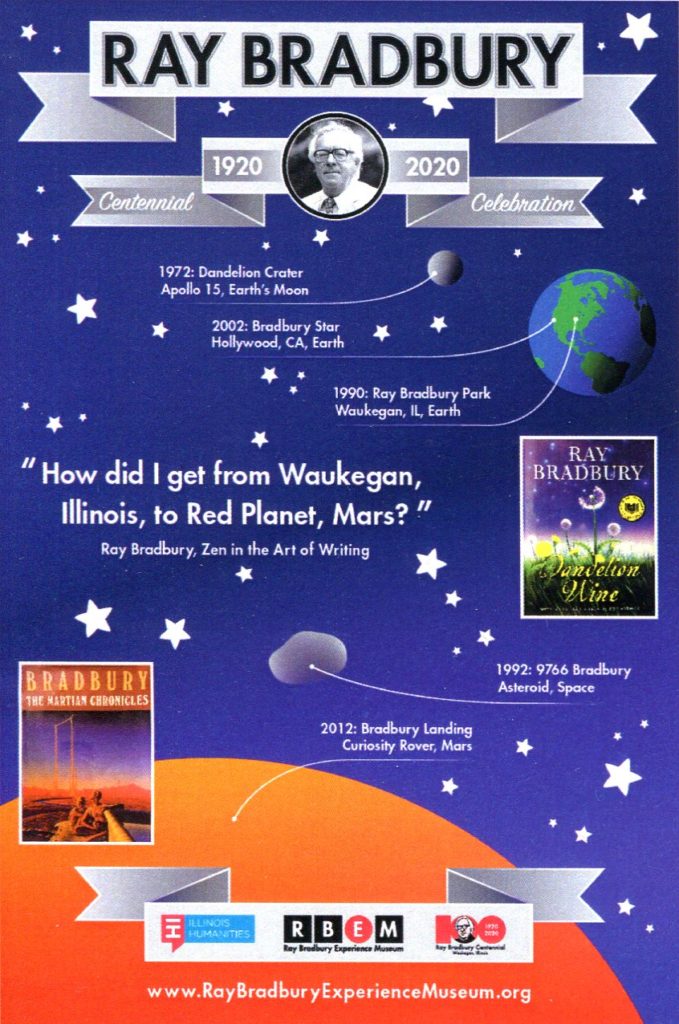
By Steven H Silver: On August 22, 1920, Esther and Leonard Bradbury became parents to a son they named Ray Douglas Bradbury in Waukegan, Illinois. A century later, the city of Waukegan is preparing to remember this child who grew up to write the novels Dandelion Wine, Something Wicked This Way Comes, and Farewell Summer, all of which take their inspiration from his childhood in Waukegan, which he called Green Town in many of his writings, by opening a museum, The Ray Bradbury Experience Museum (RBEM).
On January 9, 2020, I attended an event thrown by the committee behind the museum. Held in a storefront at 13 N. Genessee Street, a block east of the Lake County courthouse and a block south from the Genesee Theatre, this storefront is in the process of being transformed into the museum, with the intention of phase one being ready for the public in time for the centennial of Ray Bradbury’s birth.
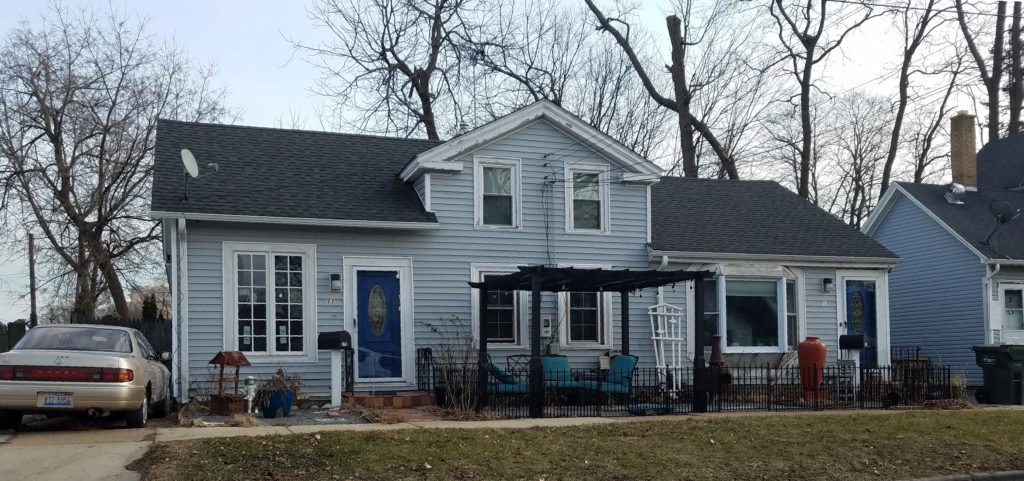
At the moment, the building isn’t much to look at. Signs in the window announce the imminence of the museum, along with a poster that outlines the way Bradbury has been honored throughout the solar system. The interior of the building is currently even less impressive than the exterior: a mostly empty warren of halls and rooms that are undergoing construction, awaiting the installation of exhibits.
The front room was filled with rows of chairs, a large monitor, a podium, and a variety of displays related to Bradbury’s career and his life in Waukegan. One wall included framed magazines that included Bradbury’s work including the original serialization of Fahrenheit 451, another wall had posters describing his ties to Waukegan, including a picture of his childhood home at 11 S. James Street, about half a mile from the museum.
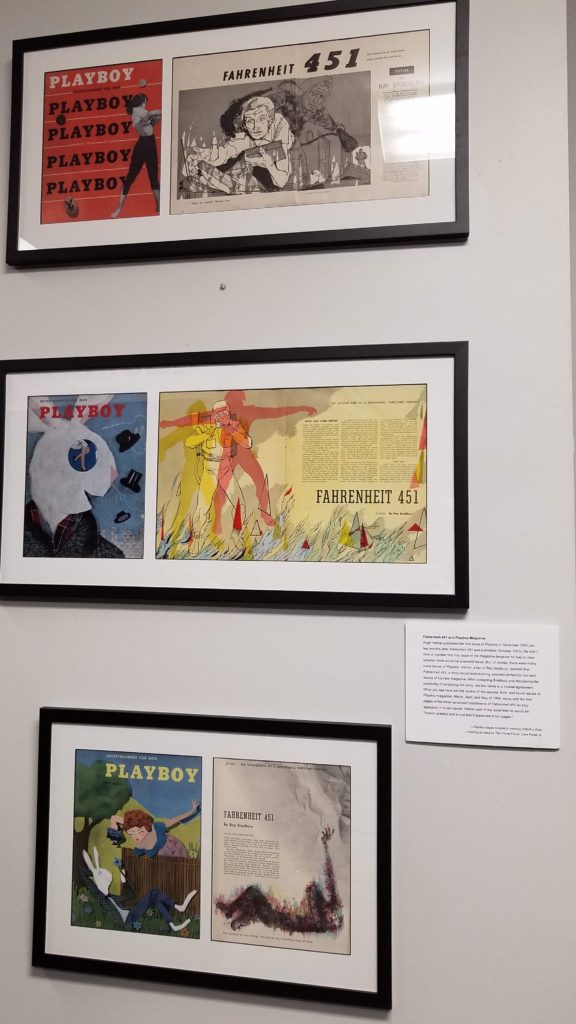
I was greeted at the door by Sandy Petroshius, the Chair of RBEM. She asked about me and the next thing I knew I was being introduced to Michael Stoltz, a member of the Mars Society who had joined the RBEM board to help run their publicity. We chatted for a while and I made my way around the room, looking at the displays.
We were asked to sit down and Petroshius took to the podium and welcomed us all. She pointed out that Waukegan has already embraced Bradbury and that last year Ray Bradbury Park was named a national literary landmark and a sculpture showing Bradbury riding a rocket was installed outside the Waukegan Public Library. Finally, she introduced Sam Cunningham, the mayor of Waukegan.
Cunningham pointed out that Waukegan was also represented by several of their alderman, the city clerk, and other dignitaries. He spoke about what Bradbury’s pride in Waukegan and what the author means to the city, and spoke of how the RBEM would assist in making the community of Waukegan into a destination. Cunningham also announced that although the plans weren’t finalized yet, Waukegan was planning a massive celebration in August to coincide with the centennial.
Other members of the RBEM committee also spoke. Vance D. Wyatt discussed the importance of showcasing Bradbury’s books and his tie to Waukegan to help inspire local students. Living in a city in which a quarter of the population lives below the poverty line and unemployment has fluctuated in the last year between 4.2% and 9.5%, it is important for them to see that people from Waukegan can, and have succeeded.
Wyatt was followed by Pat O’Keefe who has traveled around the world and spoken to people about Ray Bradbury’s influence on their lives and their reading. O’Keefe talked about the awards Bradbury has won, and those named in his honor, the adaptations of his work for film, television, and radio, and showed some artifacts of Bradbury’s career. When I was speaking to him after the presentations, I learned he had never seen the Ray Bradbury Award he had mentioned. Since I had some pictures of it on my phone from the last Nebula Conference, I showed them to him.
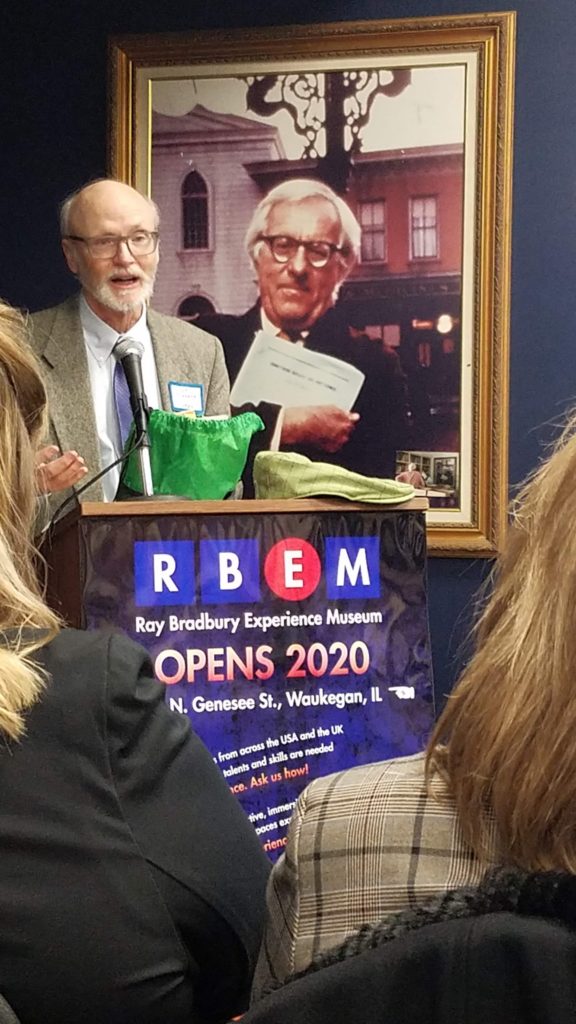
Michael Edgar, the President of the Greater Waukegan Development Coalition, took the podium next. As noted above, Waukegan suffers from unemployment and poverty. The RBEM is part of a multi-year renovation project the city is undergoing. Edgar discussed the ways Waukegan is working to support and attract businesses to Waukegan and spoke about RBEM’s role in boosting Waukegan’s downtown.
The next speaker was Mikayla Khramov, who is a film documentarian who did her Master’s thesis on Bradbury’s Green Town and is currently working on a documentary entitled Dear Ray Bradbury. She previewed the opening of the film, which she expects to finish in time for the centennial and which will be a feature length film. She also showed a short film that she’s working on called “I Met Ray,” which has short interviews with people who have come into contact with Bradbury, either directly or through his works. In addition to featuring several citizens of Waukegan, the film also featured actor Joe Mantegna, who starred in The Wonderful Ice Cream Suit and who co-produced the 2013 documentary Live Forever: The Ray Bradbury Odyssey.
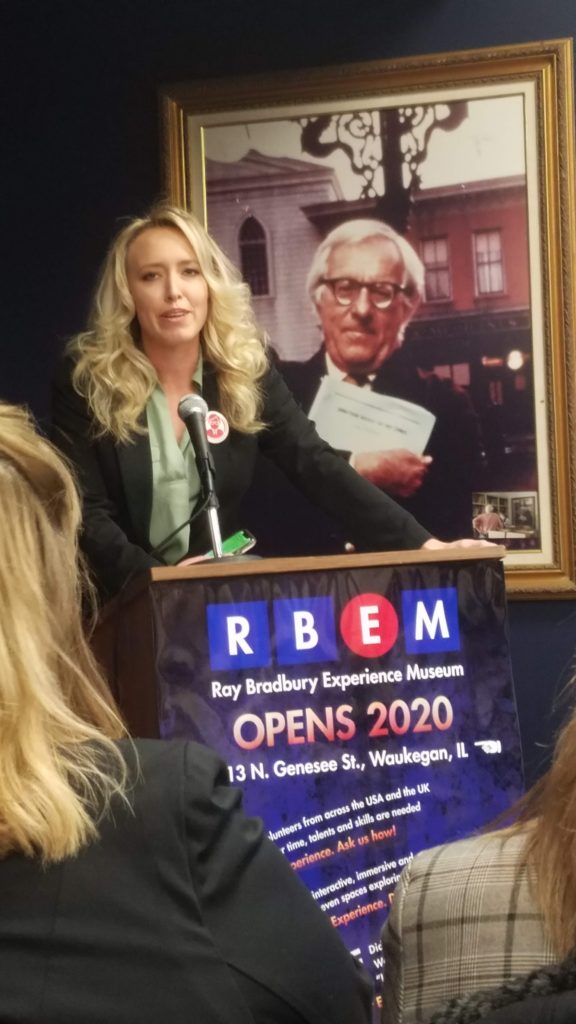
While the event so far had been entertaining and informative, the real purpose of the evening was about to happen, although it was also the part that was least connected directly to Bradbury. Local H&R Block franchisees Feroze and Samia Hanif had been selected as an H&R Block Franchisee of the Year. They were lauded by Karen Orosco, a Senior Vice President of the firm who had flown in from their Kansas City headquarters to recognize the Hanifs and present them with a check for $10,000. The Hanifs, in turn presented a check for $10,000 to RBEM to help with their efforts to complete the first phase of the museum.

The museum’s exhibits are being designed by Chicago Exhibit Productions, with a team headed by Keith Michalek. Michalek stepped in front of the audience with the meatiest part of the evening. He explained the difference between an experiential museum and a display museum. The goal of the RBEM would be to take whatever image a visitor had of Bradbury and his work when they entered the museum and to transform it before they left through hands-on, interactive exhibits that would not remain static, but would change.

The museum would have seven rooms, with each room having a different focus. The room we were all sitting in, the Martian Chronicle room, would focus on space exploration. Other rooms would include a biographical exhibit about Bradbury, the Fahrenheit 451 room which would aim to explore freedom of expression, censorship, and creativity. The Something Wicked room wood look at horror, fantasy, and circuses. The Dandelion Wine room would be devoted to libraries, books, and the tie between Bradbury and Waukegan. The remaining rooms would focus on tributes to Bradbury by other creatives and a viewing room where films and television shows based on Bradbury’s works and documentaries about Bradbury could be screened.
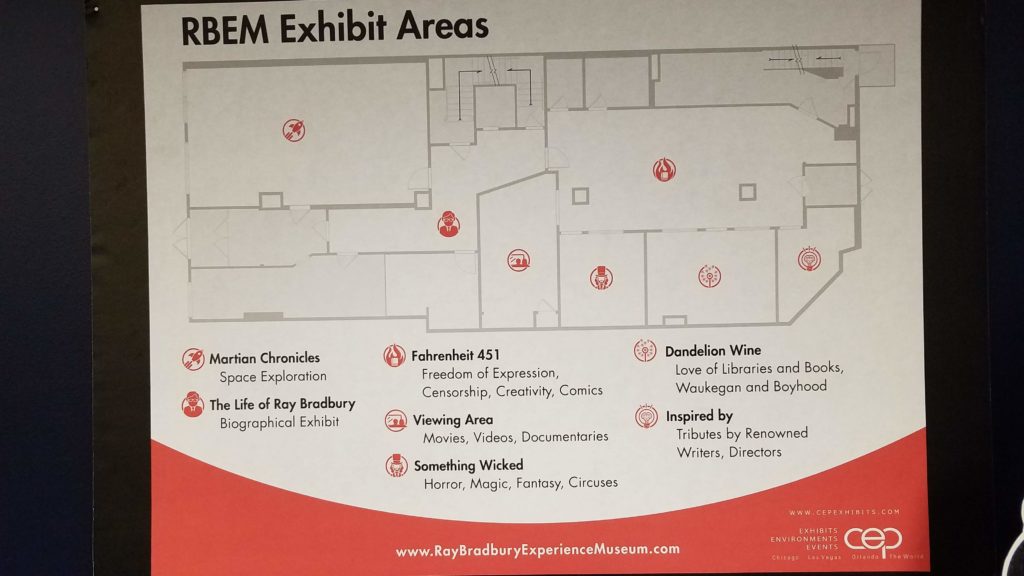
The organization clearly has detailed plans for the museum and the images Michalek showed of the concepts for their exhibits appear well thought out. In addition to the interactive exhibits, the museum plans on holding a variety of events to inform and interact with the public.
And I did find my visit transformative, even if the displays are not installed yet. I walked into the event to learn about what the museum was going to have to offer and perhaps get a sneak preview of their exhibits. By the time I left, I had made plans to talk to various members of the board to find out what I could do to help bring the museum and their vision to fruition.
Discover more from File 770
Subscribe to get the latest posts to your email.
